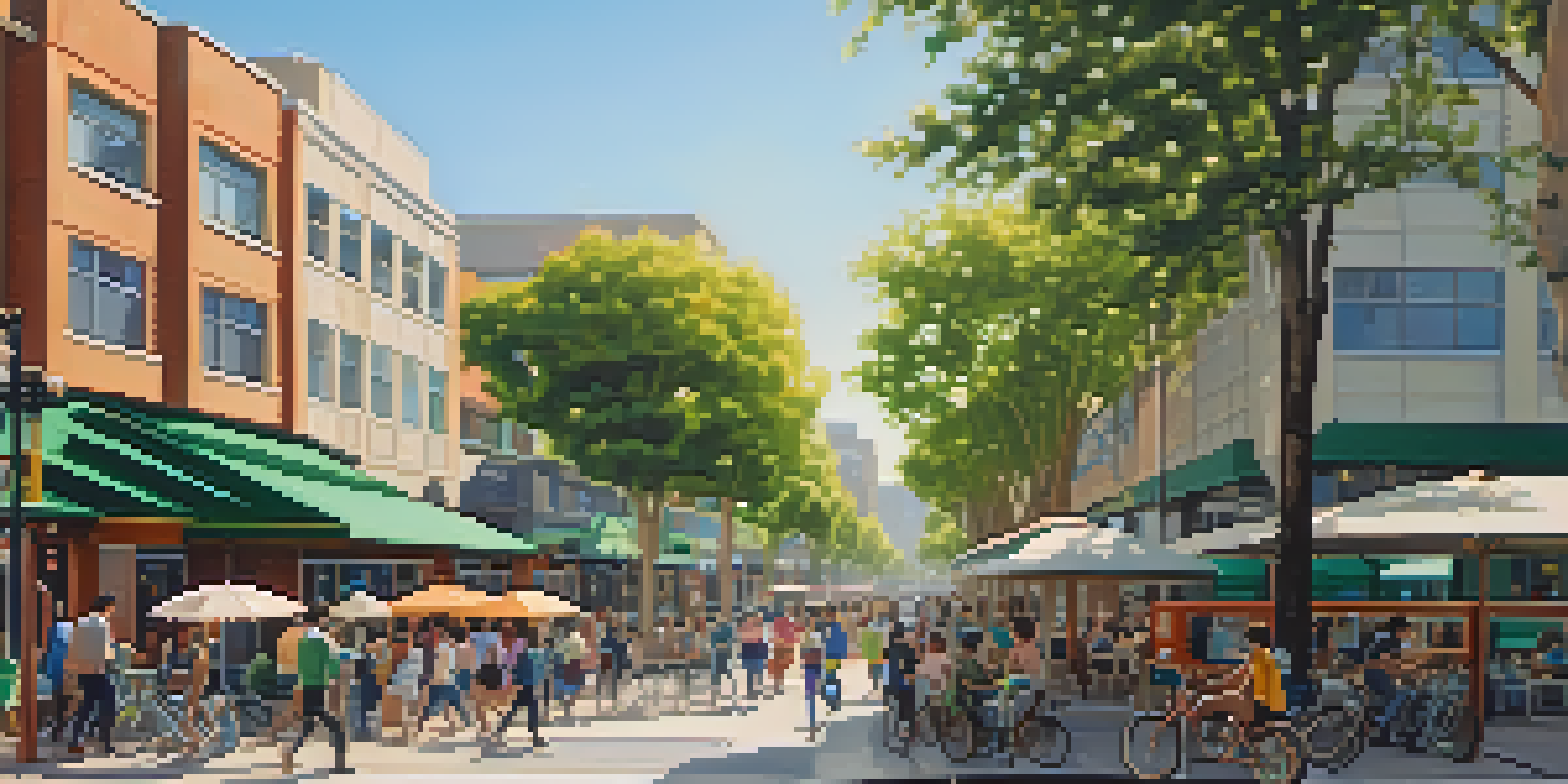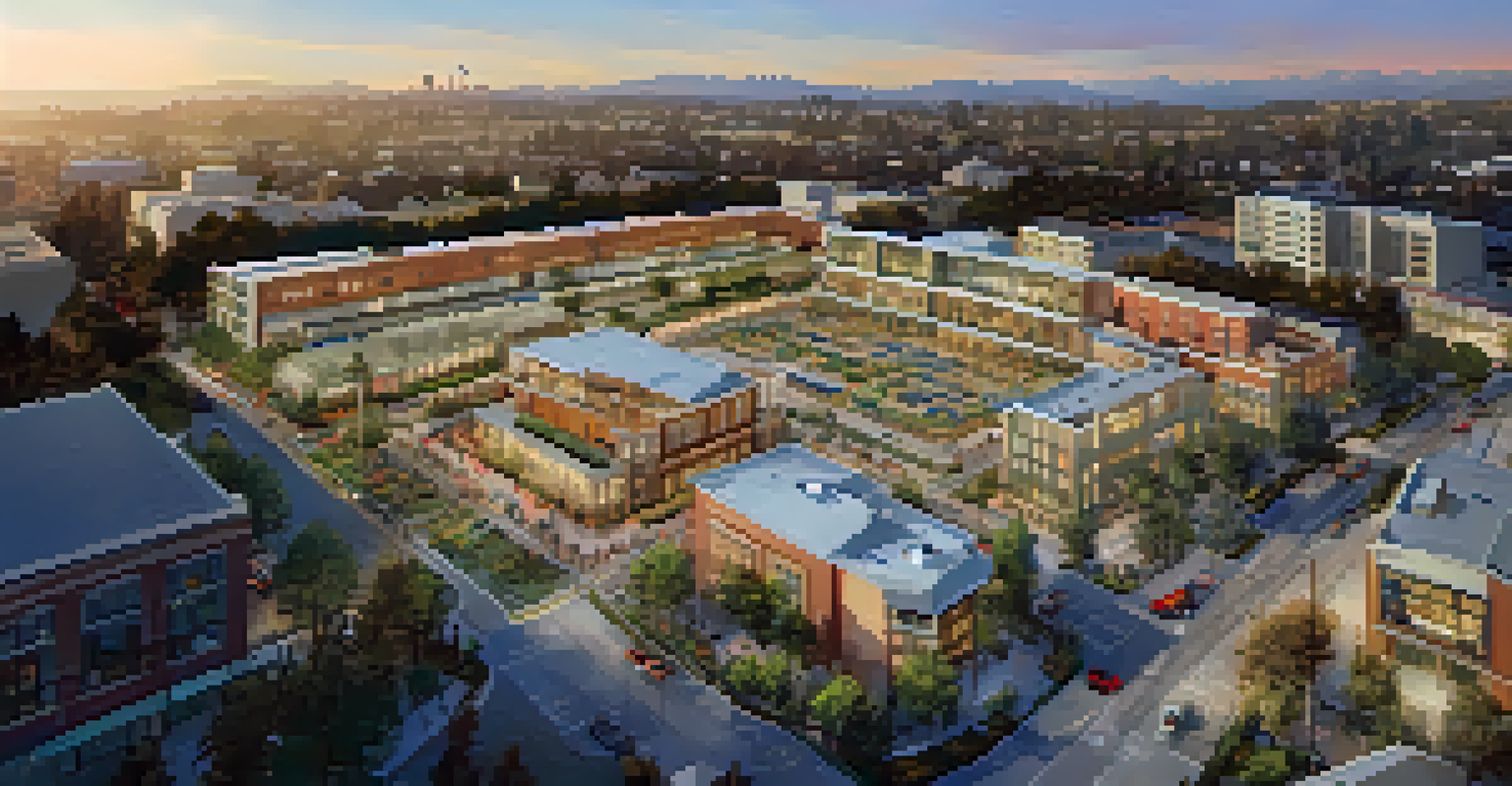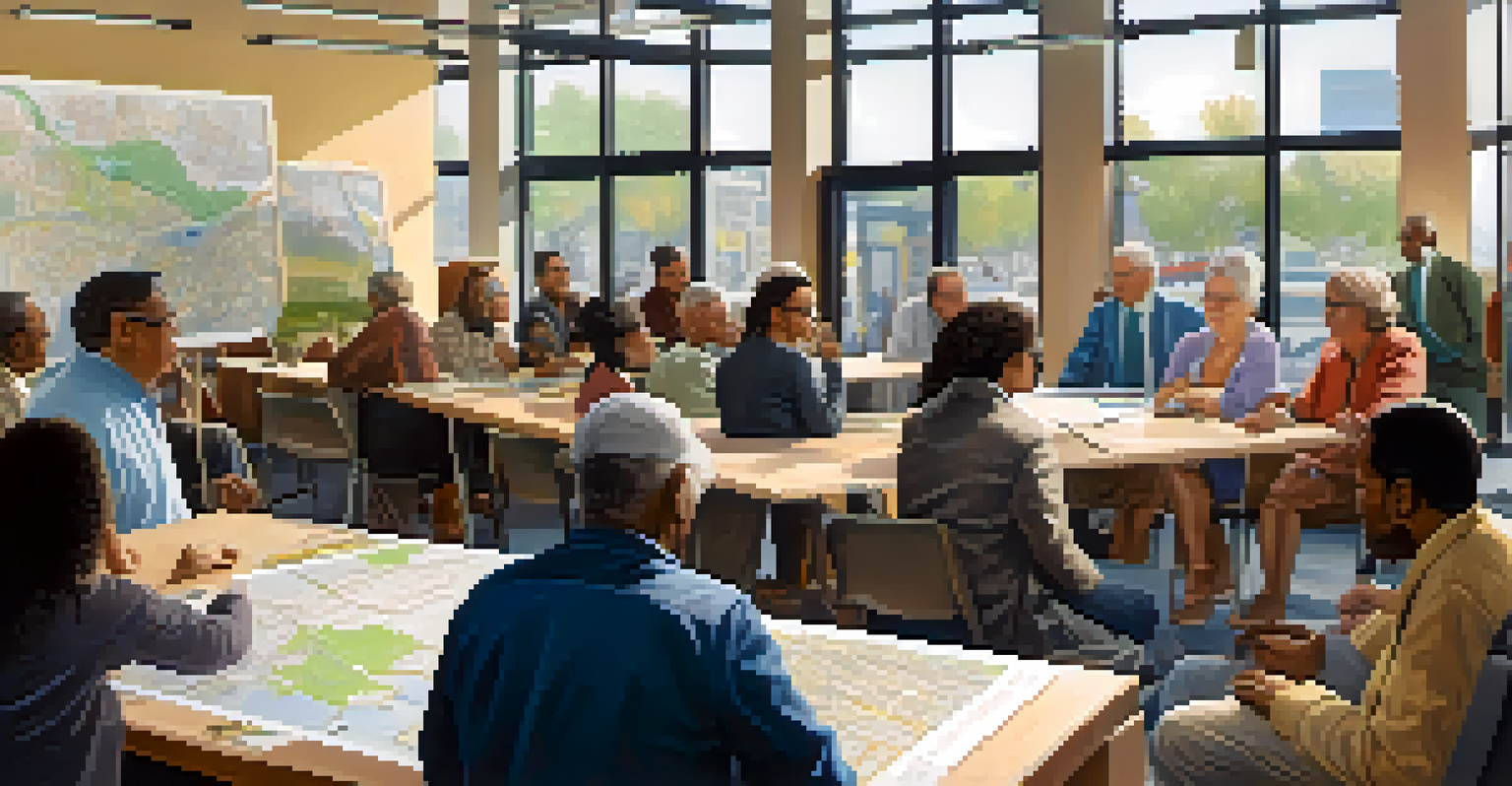Transit-Oriented Development: San Jose's Urban Planning Future

Understanding Transit-Oriented Development (TOD)
Transit-Oriented Development, or TOD, is a planning approach that focuses on creating vibrant communities centered around public transit. The idea is to reduce reliance on cars by integrating housing, businesses, and public spaces within walking distance of transit stations. This not only promotes a more sustainable lifestyle but also enhances the quality of life for residents.
Transit-oriented development is about making cities work for people, not cars.
For instance, imagine a neighborhood where you can grab your morning coffee, catch a train to work, and return home to a park—all without needing to drive. This connectivity fosters community engagement and encourages local businesses to thrive, creating a win-win situation for everyone involved.
In San Jose, the adoption of TOD principles is a crucial step toward addressing urban sprawl and environmental concerns. By promoting public transport use and reducing car dependency, San Jose aims to create a more livable and sustainable urban environment.
San Jose's Urban Landscape: Current Challenges
San Jose, like many growing cities, faces several urban planning challenges, including traffic congestion, limited affordable housing, and environmental sustainability. The city's rapid growth has led to increased car dependency, which strains the existing transit infrastructure and contributes to pollution. As the population continues to rise, finding effective solutions becomes increasingly urgent.

Take, for example, the daily commute for many residents who spend hours stuck in traffic. This not only affects their quality of life but also has broader implications for air quality and city infrastructure. Such scenarios highlight the need for innovative planning approaches like TOD.
TOD Enhances Community Connectivity
Transit-Oriented Development fosters vibrant neighborhoods by integrating housing, businesses, and public spaces near transit stations.
By recognizing these challenges, San Jose is positioned to leverage TOD as a strategic solution that promotes sustainable growth. This means creating neighborhoods that are not just functional but also pleasant and accessible for everyone.
The Vision for San Jose's TOD Initiatives
San Jose's vision for Transit-Oriented Development is ambitious, aiming to create a network of interconnected communities that prioritize public transportation. The city's plan includes developing mixed-use spaces that combine residential, commercial, and recreational areas. This holistic approach ensures that residents have everything they need within reach, promoting a balanced lifestyle.
Sustainable urban development is about creating a better quality of life for everyone, built on a foundation of clean air, accessible transportation, and vibrant communities.
Imagine stepping out of your apartment and finding shops, parks, and your transit station just a short walk away. This vision seeks to cultivate a sense of community while also addressing the pressing need for housing and accessibility in San Jose.
Moreover, these initiatives align with broader goals of sustainability and economic growth. By investing in transit infrastructure, San Jose can attract businesses and residents who value convenience and a reduced carbon footprint.
Key Projects Driving Transit-Oriented Development
Several key projects in San Jose exemplify the city's commitment to Transit-Oriented Development. For instance, the Diridon Station Area Plan is set to transform the area surrounding the city's main transportation hub into a vibrant mixed-use community. This project will integrate housing, office spaces, and public amenities, all within walking distance of transit options.
Another exciting initiative is the development of the BART extension into San Jose, which will enhance connectivity to the broader Bay Area. This will not only make commuting more efficient but also encourage development in areas previously underserved by public transport.
San Jose's Urban Challenges Addressed
San Jose faces issues like traffic congestion and housing shortages, making innovative planning like TOD crucial for sustainable growth.
These projects are just the tip of the iceberg, as San Jose continues to explore new opportunities for TOD in various neighborhoods. They represent a significant step toward a more connected and sustainable urban future.
Community Involvement in TOD Planning
Community engagement is a vital component of successful Transit-Oriented Development. San Jose recognizes the importance of involving residents in the planning process to ensure their needs and preferences are met. Through public forums, surveys, and workshops, the city gathers valuable input to shape its TOD initiatives.
For instance, when planning new developments, city planners often host community meetings to discuss design concepts and gather feedback. This collaborative approach not only fosters a sense of ownership among residents but also helps identify potential challenges early on.
By prioritizing community involvement, San Jose aims to create spaces that resonate with its diverse population. This ensures that new developments are not just functional but also reflective of the community's values and aspirations.
Sustainability and Environmental Impact of TOD
One of the primary benefits of Transit-Oriented Development is its potential to enhance sustainability. By promoting public transit, walking, and biking over car use, TOD can significantly reduce greenhouse gas emissions and improve air quality. This aligns perfectly with San Jose's commitment to environmental stewardship and combating climate change.
For example, neighborhoods designed around transit hubs encourage residents to choose public transportation for their daily commutes, leading to fewer cars on the road. This not only lessens traffic congestion but also contributes to a healthier environment for everyone.
Sustainability Through Transit Planning
TOD promotes public transit use, reducing car dependency and greenhouse gas emissions, thereby supporting San Jose's environmental goals.
In addition, TOD often incorporates green spaces, energy-efficient buildings, and sustainable materials, further minimizing environmental impact. By focusing on these elements, San Jose is not just planning for the present but also investing in a sustainable future.
The Future of Transit-Oriented Development in San Jose
As San Jose continues to grow, the future of Transit-Oriented Development appears promising. With ongoing projects and community support, the city is poised to become a model for sustainable urban planning. The integration of innovative designs, public transport, and community spaces will shape a vibrant urban landscape that meets the needs of its residents.
Looking ahead, the city plans to explore even more TOD opportunities, particularly in underdeveloped areas. This includes revitalizing neighborhoods that have historically lacked access to public transit while ensuring that new developments remain affordable and inclusive.

Ultimately, the success of these initiatives will depend on collaboration between city officials, developers, and the community. Together, they can turn the vision of a transit-oriented San Jose into a reality, paving the way for a more connected and sustainable urban future.